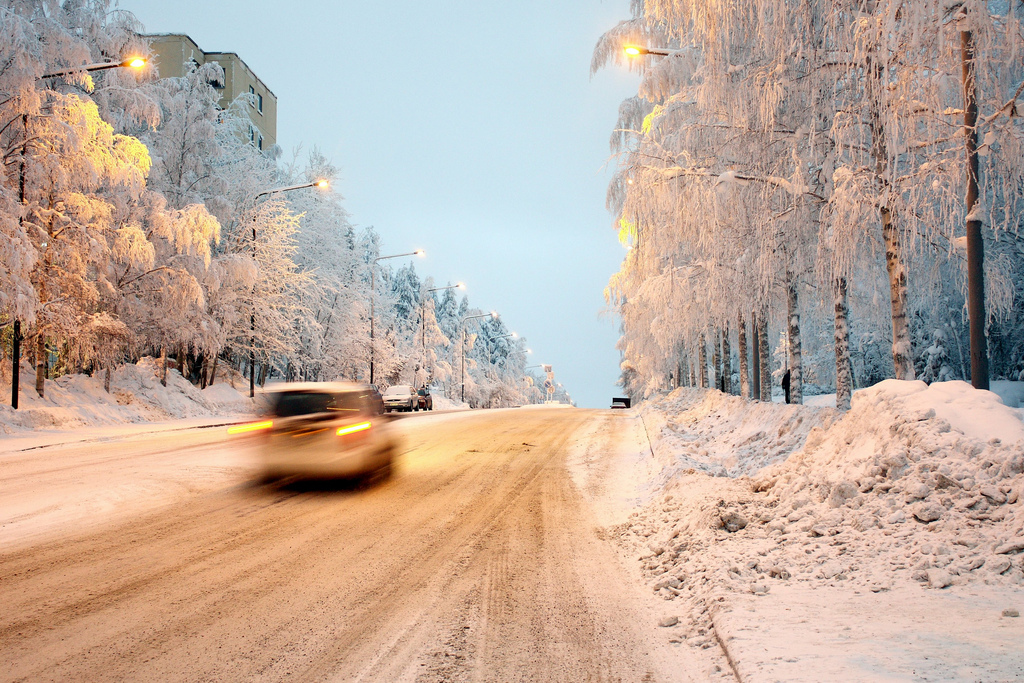When my family lived in southern California, it felt like we only had one season. Every day was 70 with hazy sunshine. Occasionally it would rain, and everyone would forget about how to drive. Driving in the snow was something very rare that you only experienced when heading up to Big Bear to go skiing. All of that changed when we moved to the Pacific Northwest where ice storms, freezing fog, and snow have become a way of life.
During our first big snowstorm, I foolishly thought that I could drive into work. I ended up fishtailing my pickup truck and sliding to the side of the road about a mile from home. Being bullheaded, I tried driving home in a snowstorm a few years later. I had bald tires, so I spent much of my drive time spinning my wheels while trying to climb the hills in the road. I can still smell the burning rubber when I think about that day.
Of course, the smarter approach is to get your vehicle ready for winter in advance so that you don’t end up with a difficult drive. Below are a few tips to prepare your car for winter that I learned along the way. Hopefully they help you stay out of trouble during your next drive.
1. Check your tires for wear
Most of my problems would have been avoided if I had tires with adequate tread. Before the weather gets bad, look at the treads of your tires for any signs of wear. Many tires have bars of hard rubber in the design that only appear when the tread is worn down to 1/16th of an inch (the legal limit in most states). Another way to check your tires for wear is with a penny. Put Lincoln’s head down in the groove between the treads. If you can see the top of Lincoln’s head, your tires probably need to be replaced.
2. Keep chains in your car
You may never need to drive with chains (or cables) on your car, but having them in the trunk offers incredible peace of mind. I was driving back from Seattle one night when a snow flurry hit. Even though I was only driving 30 mph, I suddenly skidded to the side of the highway when I hit an ice patch. I pulled off at the next stop and put chains on my truck. Without them, I wouldn’t have made it home that night. If your car doesn’t have four wheel drive, keeping chains in the trunk is an easy way to make sure you won’t get stranded if you suddenly face difficult road conditions.
3. Get a good ice scraper
I park in our garage at night, but ice often forms on the windshield while my car is parked at work during the day. The small ice scrapers that you find in a rental car aren’t enough. They are better suited for applying putty to walls. What you need is an ice scraper with a long handle and a brush. This will let you reach more of your windshield and you can brush the snow off other parts of your car. If the ice is really bad, try running your car’s defroster for a few minutes to help soften up the ice.
4. Get your battery checked
A dead battery is one of the most common car issues in cold weather. Most oil change place, mechanics, or tire dealerships will check your battery for free. It only takes a few minutes to get your battery checked, which will be worth it when you’re warm inside the car instead of freezing while waiting for the tow truck.
5. Rubber floor mats
Your vehicle’s carpets will get filthy quickly from damp shoes and mud. Rubber floor mats will keep the interior of your car looking good, even when your shoes are tracking in lots of muck from the outside.
6. Replace those wipers
New windshield wipers are one of the least expensive and easiest ways to stay safe during rough weather. You need to see where you are going, and that becomes difficult fast when your windshield wipers can’t clear the rain or snow out of the way.
One final tip worth sharing is that it is always a good idea to keep a blanket and an emergency kit in your car, along with a flashlight. You never know what might happen on the road, but with a little preparation you can be ready for whatever might happen on a blustery winter night.
Photo via Flickr
